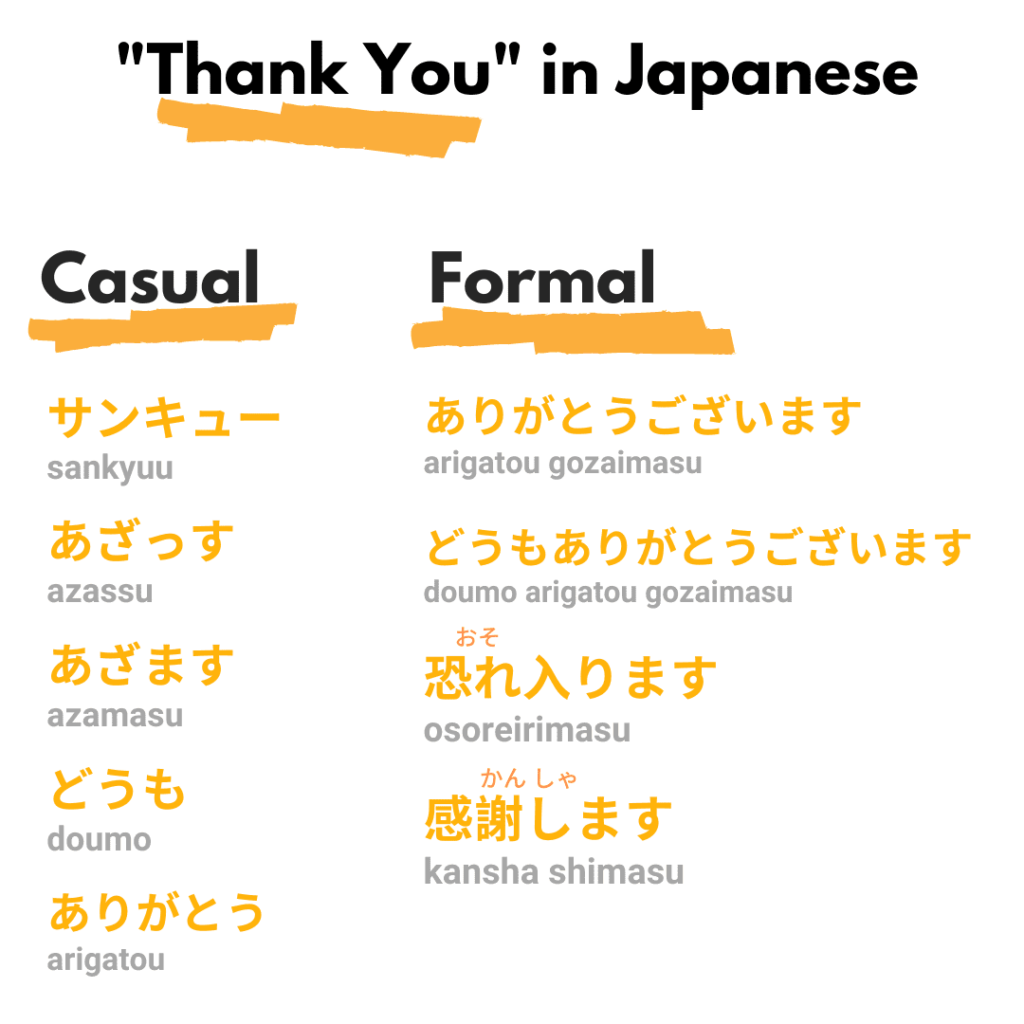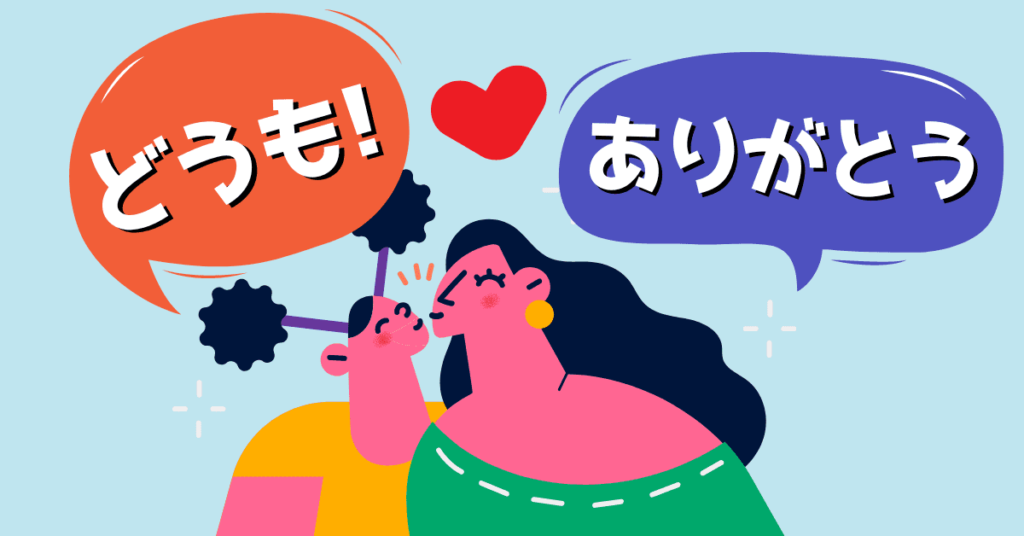Looking to order takeout in Japan? In Japan, many chain restaurants offer a takeout option on their menu. When almost everyone’s busy working, ordering takeout can be pretty convenient for the vast majority who’d like to grab a quick meal. Still, ordering takeout in a foreign language can be intimidating, but with a few key phrases and some practice, it can become a breeze. In this article, we will learn how to order our food in a natural-sounding way.
Read here to learn more about how to order food at a restaurant!
Step 1: Greeting
When you first enter the restaurant or call to place an order, the staff will politely greet you with a “いらっしゃいませ” (irasshaimase). In return, a common greeting is “こんにちは” (konnichiwa), which means “hello” or “good afternoon.”
After that, you’ll often be asked:
いらっしゃいませ、こちらでお召し上がりですか
Irrashaimase, kochira de omeshi agari desu ka?
Welcome. Are you eating in?)
いらっしゃいませ、店内でお召し上がりですか。
Irrashaimase, tennai de omeshiagarimari desu ka?
Welcome. Would you like to eat in (the restaurant).
召し上がり is a noun coming from the verb 召し上がる a very formal/honorific way to say “to eat”. Using honorifics is one of the ways staff show respect for the customer they are serving. Here again, お is added to the noun so as to sound more polite.
Step 2: Saying “I’d Like Take-out!” in Japanese
お持ち帰りで(お願いします)。
Takeout (please).
持ち帰り translates to takeout. It comes from the verb 持ち帰る, meaning “to bring back” or “to carry home”.
The prefix お makes the noun sound more polite. As for the particle で, in this context, indicates a mean or a method. This particle literally translates to “by”, “with”, “by means of” or “in”. It implies that you make a choice from a series of options. Here, you’ve opted for takeout instead of dining in at the restaurant. Adding “お願いします” makes you sound more polite. However, this phrase is often skipped by the Japanese themselves so time’s wasted when ordering food! Click here for more phrases that make you sound more polite!
Step 3: Communicate In Japanese to Order Take-out
Now let’s continue our conversation with the staff! If you want to order a takeout you can answer the counter staff with this:
いいえ、お持ち帰りで(お願いします).
Iie, omochiaeri de (onegai shimasu).
No, takeout please.
If you’d like to eat in instead, you can say はい、ここで (Yes, here) or はい、店内で (Yes, here).
At a fast food restaurant, the waiter might ask directly if you’re ordering takeout:
店員: いらっしゃいませ、お持ち帰りですか。
Waiter: Welcome, would you like a takeout?
You can then answer : はい、お持ち帰りで(お願いします)(Yes, takeout (please)).
The waiter will follow up by asking you for your order:
ご注文をどうぞ.
Gochuumon o douzo.
May I take your order?
The literal translation would be closer to “place your order”. However, the phrase here is a polite way to ask if the customer is ready to order their food. They can also say:
ご注文をお伺いします.
Gochuumon o oukagai shimasu.
I would like to ask your oder.
The verb お伺いします (oukagaishimasu) is actually stemmed from an already humble form of ask, kiku (聞く): ukagau (伺う). As you talk with the restaurant staff, you’ll notice that they are using polite Japanese to talk to you, so it can be confusing at first when you are only learning daily Japanese vocabulary and basic verb forms.
Don’t worry, though! The more you go out to eat in Japan and order omochikaeri, the more you’ll get used to keigo (敬語).
Ordering your food is the easy part. Even if you can’t really speak or read Japanese, simply point on the menu to indicate what you want.
If you have any questions about the menu items, you can ask the staff “これはなんですか?” (kore wa nan desu ka?), which means “What is this?” or “What is it?”
If you can’t read the menu but know your order through the pictures, you can use phrases such as “これをください” (kore o kudasai),
You can use the counter つ (ひとつ (one of…)、ふたつ (two of…) etc.) to indicate the amount you want. You can learn how to count in Japanese through this article. For exampe, if you are ordering a two hamburgers, you can say:
ハンバーガーを二つください。
Hanbaagaa o futatsu kudasai.
Two hamburger, please.
Step 4: Customizing Your Takeout in Japan
Food Portion Sizes
Sizes in Japan can also be known as エス (S for small), エム (M, medium) or エル (L, large).
Some restaurants might use the Japanese sizing system too:
Big Sizes: 大盛り (oomori)
Regular Sizes: 普通 (futsuu) or 並盛り (namimori)
Small Sizes: 少なめ (sukuname) or ミニ (Mini)
Sounds simple, doesn’t it? Combining what we learned so far, let’s see how a typical takeout order in Japan usually goes!
Staff:いらっしゃいませ。
Irrashaimase.
Welcome.
You: こんにちは、ビッグマックを一つと、フレンチフライをLサイズでお願いします。
Konnichiha, biggu makku o hitotsu to, furenchi furai o eru saizu de onegai shimasu.
Good afternoon. I’d like one Big Mac and an L-size french fires.
Saff: 店内(てんない)でお召(め)し上(あ)がりですか。
Tennai de omeshiagarimari desu ka?
Welcome. Would you like to eat in (the restaurant)?
You: いいえ、お持(も)ち帰(かえ)りで(お願(ねが)いします).
Iie, omochiaeri de (onegai shimasu).
No, takeout please.
Staff: はい、ビッグマック一つ、フレンチフライLサイズ、注文いたします。何か追加でいかがですか?
Hai, biggu makku hitotsu, furenchi furai eru saizu, chuumon itashimasu. Nanika tsuika de ikaga desuka?
One Big Mac and L-size french fries. Would you like to add anything else?
You: いいえ、それだけです。
Iie, sore dake desu.
No, just that.
Staff: かしこまりました。お会計は1300円になります。
Kashikomarimashita. Okaikei wa sen-sanhyaku en ni narimasu.
Noted. The total is 1,300 yen.
You: 現金でお願いします。
Genkin de onegaishimasu.
(I’d like to pay) with cash, please.
Staff: はい、お預かりいたします。
Hai, oazukari itashimasu.
Alright, I’ll take care of it
Ordering takeout in Japanese may seem daunting at first, but with practice and the right phrases, it can become a comfortable and rewarding experience. Remember to take your time to choose your order, make any special requests, confirm your order, and pay for your order in a courteous manner. With these tips in mind, you’ll be able to confidently order takeout in Japanese in no time.
Check out some other commonly used words below!
Vocabulary:
- ホット ー Hot (for drinks)
- アイス ー Cold (for drinks)
- ポテトフライ ー French fries
- ケチャップ ー Ketchup
- マスタード ー Mustard
- ハンバーガー ー Hamburger
Click to tweet this article and let more people know how to order a take out in Japan! If you would like to find out more about how you can make a purchase in Japanese, check out this blog!
If you are interested in studying Japanese in Tokyo, find out more about our school by filling out the form below.
What is takeout in Japanese?
Takeout in Japanese is テイクアウト (teikuauto) or お持ち帰り (omochikaeri)
How do you request for a takeout in Japanese?
お持ち帰りでお願いします(omochikaeri de onegaishimasu).
What are some good restaurants to get takeout in Japan?
There are many great restaurants in Japan that offer takeout options. Some popular chains include McDonald’s, KFC, and Yoshinoya. You can also find local restaurants and cafes that offer delicious takeout meals.
How can I find takeout options near me in Japan?
You can use apps like Google Maps or Tabelog to search for restaurants and cafes near your location that offer takeout. You can also look for signs that say “omochikaeri” (お持ち帰り) outside of restaurants and cafes.


